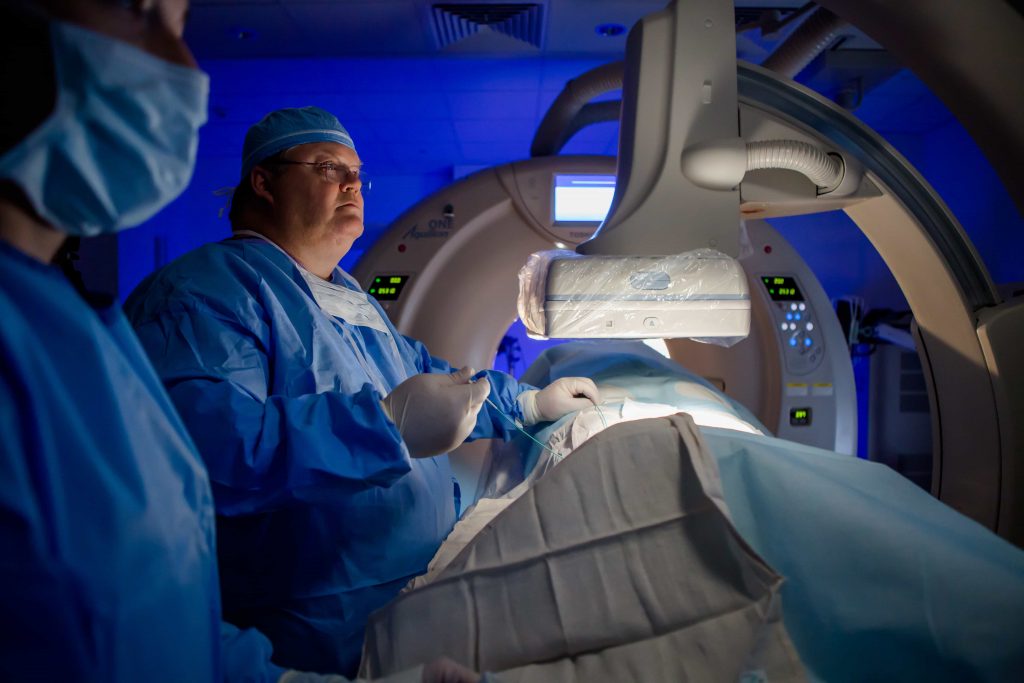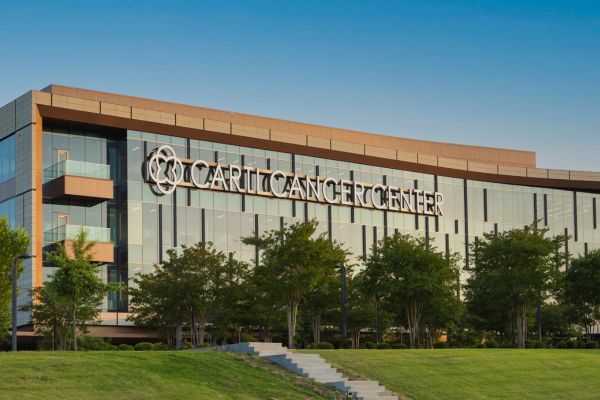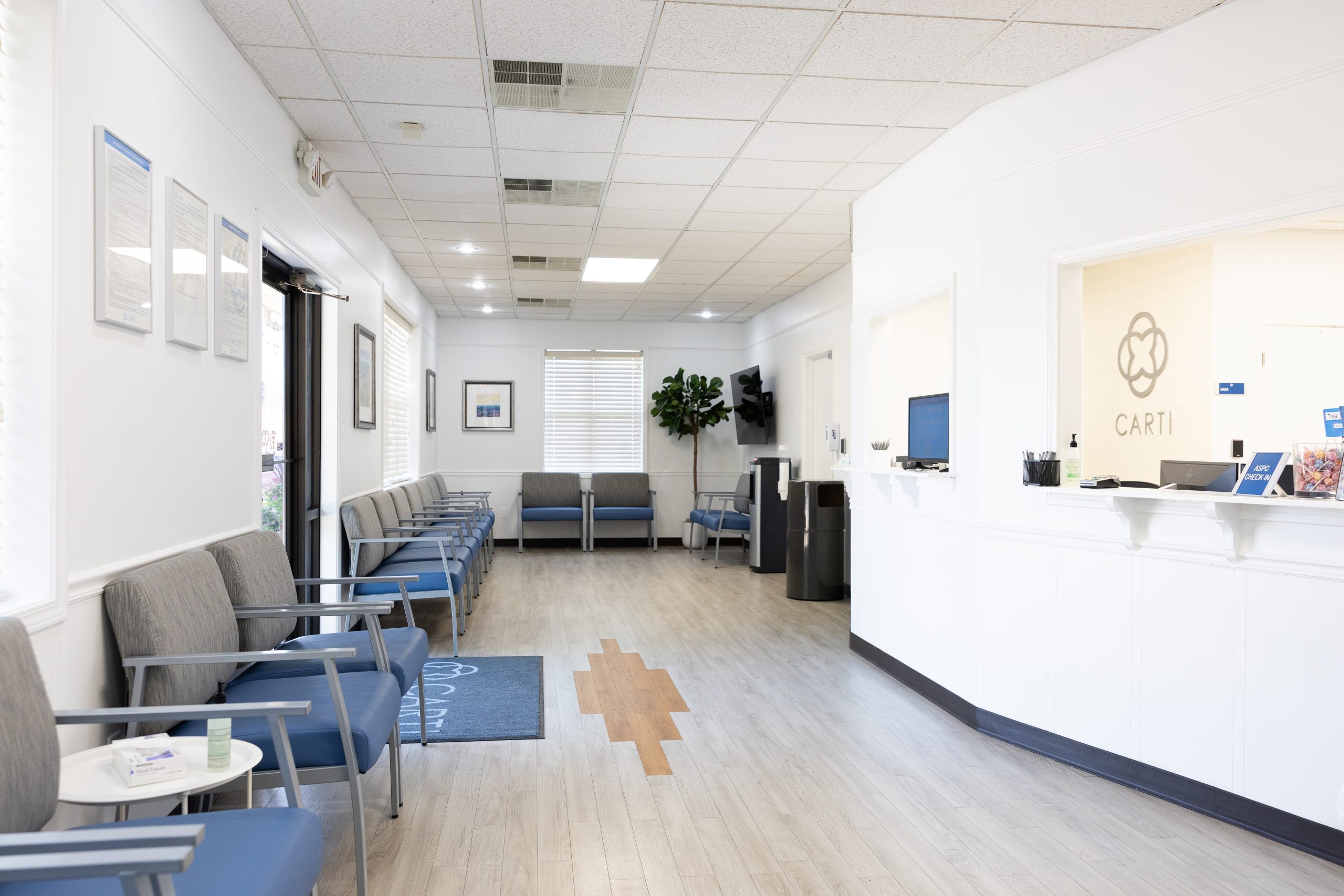The Benefits of Providing Interventional Oncology in an Outpatient Setting

As seen in the September/October issue of Healthcare Journal of Arkansas. By David Hays, M.D., Interventional Radiologist and Medical Director of Radiology; Edgar St. Amour, M.D., Interventional Radiologist
Interventional oncology is a subspecialty of radiology that specializes in performing minimally invasive procedures that are integral to the diagnosis and treatment of various forms of cancer. Common procedures include: biopsies to diagnose a tumor; venous access, such as infusaport placement to receive chemotherapy; and tumor directed therapies, such as ablation and embolization.
Interventional oncology has become such a critical component of modern oncology care that it is often referred to as the “fourth pillar of cancer care”, supporting the more commonly known modalities of medical, surgical and radiation oncology.
As a procedure-based specialty, interventional oncology has historically been performed in an inpatient hospital setting. However, in recent years, more cancer care providers see the benefits of providing this specialty in an outpatient clinic setting. From the emotional benefit to the patient to financial implications for both the patient and provider, there are various reasons that performing these procedures in an outpatient setting can be advantageous for all involved.
One key reason providers are moving to this model is the thought that it is more beneficial to the patient because it eliminates the added stress of going into a hospital setting to have a procedure performed. If the same procedure can be done safely in an outpatient setting or office based lab, this alleviates one more worry for the patient. In recent years, many patients who have procedures performed in a hospital actually go home the same day, supporting the theory that procedures can be performed safely and effectively in an outpatient setting and do not require overnight stays.
As an example, when tumor embolization, or blood vessel blockage to shrink a tumor, was first introduced in the United States, patients often had significant pain and experienced flu like symptoms, called post embolization syndrome, for a few days following the procedure. With time, embolization has evolved significantly in the way the procedure is performed, the devices available and the method of delivery. These changes in technique and technology have significantly reduced the severity of potential side effects to the point where these are routinely performed in an outpatient setting with easily manageable side effects experienced by the patient.
While the field has evolved over the years in both technology and technique, allowing for more complex procedures being done less invasively, the greatest evolution to support a move toward outpatient settings has been an increase in comfort level for the interventional oncologists performing the procedures, cost reductions and a drop in resource utilization.
As with surgical specialties in the past, interventional oncologists have developed their own set of techniques and clinical acumen, which has cumulatively led to an increased comfort level in treating patients in an outpatient setting. Interventional oncologists are trained to manage the medical needs as well as the perioperative needs of their patients. We see patients in clinic when necessary, and are always available to patients throughout their oncology care, even when the patient is not in a hospital.
Consider, for example, a pneumothorax, or air trapped around the lung, which is a known complication of a lung biopsy. In some instances, this requires placement of a chest tube to relieve potentially serious complications. Historically, chest tubes have been managed in a hospital setting. However, we now know that these can be safely managed at home with a special valve that allows the air to escape the chest but not reenter. This ultimately leads to both a cost reduction and a decrease in resource allocation.
When a patient is admitted to a hospital for a procedure, there are significant associated costs and resource demands. These include personnel requirements, building regulations and even the mental and emotional support services for the patient. When a patient must be tended to in a hospital, there are nursing and monitoring requirements that do not exist within the patient’s own home. Moreover, there is no maintenance cost associated when you can recover at home. Additionally, and even more importantly, research shows that patients are more comfortable at home and tend to heal quicker.
While many positive advancements have occurred, financial reimbursement still remains an obstacle in the transition to outpatient care. While the procedures are cheaper to be performed in an outpatient center, some insurance providers are hesitant to pay for procedures in these type of settings. For example, Medicaid will only pay for procedures to be performed in a hospital-based setting. Overall, though, most procedures are covered in an outpatient setting and the growth in this market has been tremendous.
Ultimately, the benefit of practicing interventional oncology in an outpatient setting is the ability to offer more individualized care to the patients being treated. This leads to the interventional oncology team developing closer relationships with patients who are seen on a regular basis. Whether it be for drainage of chest or abdominal fluid to relieve symptoms, or actual tumor treatment procedures, the interventional oncologist becomes a regular part of these patients’ care team, which is extremely gratifying for both the physician and the patient. When this particular care team and specialty is under the same roof as the patient’s overall medical team members, it makes the patient’s journey easier and more tailored to their individual needs.







